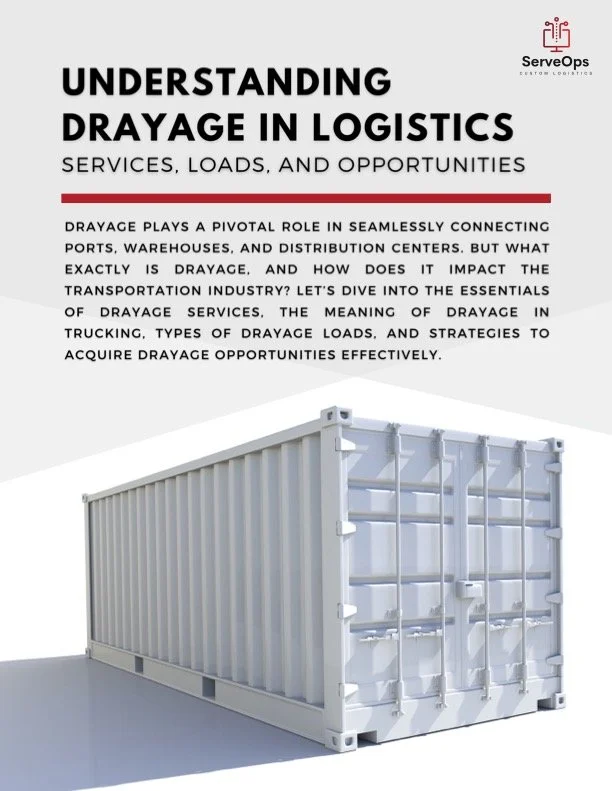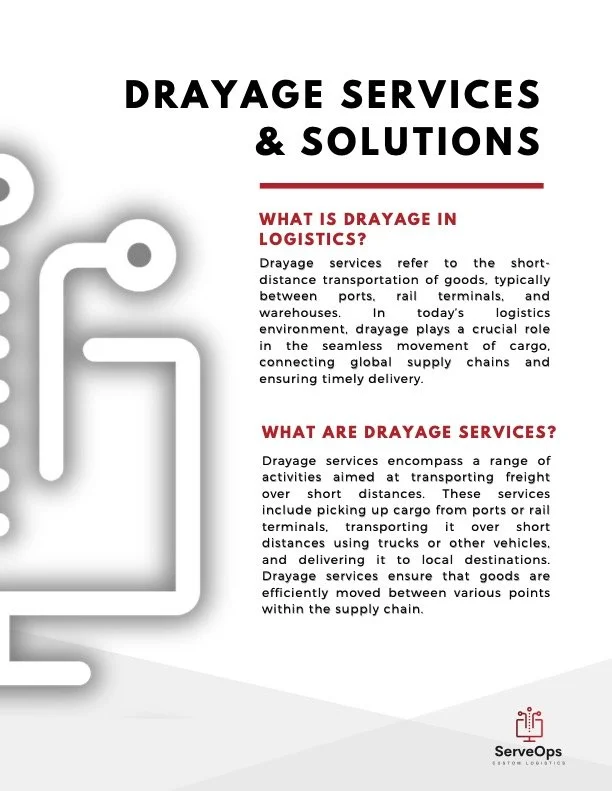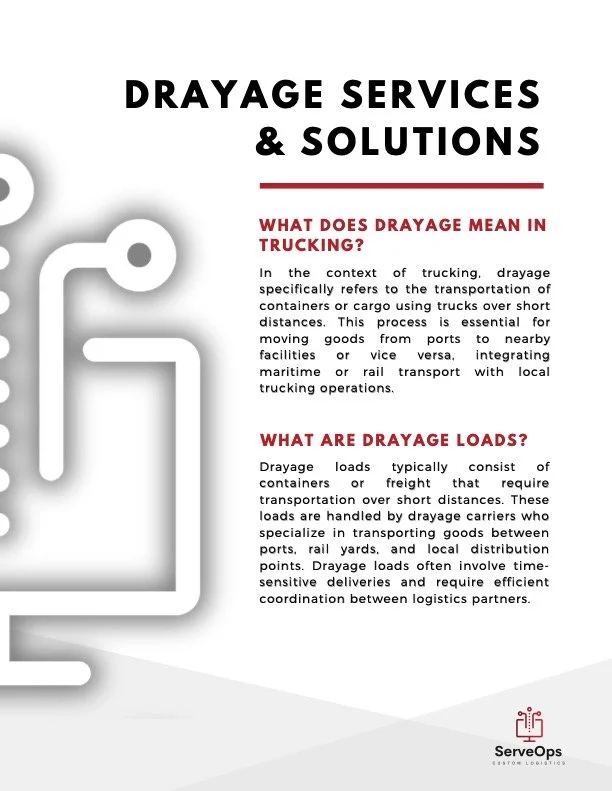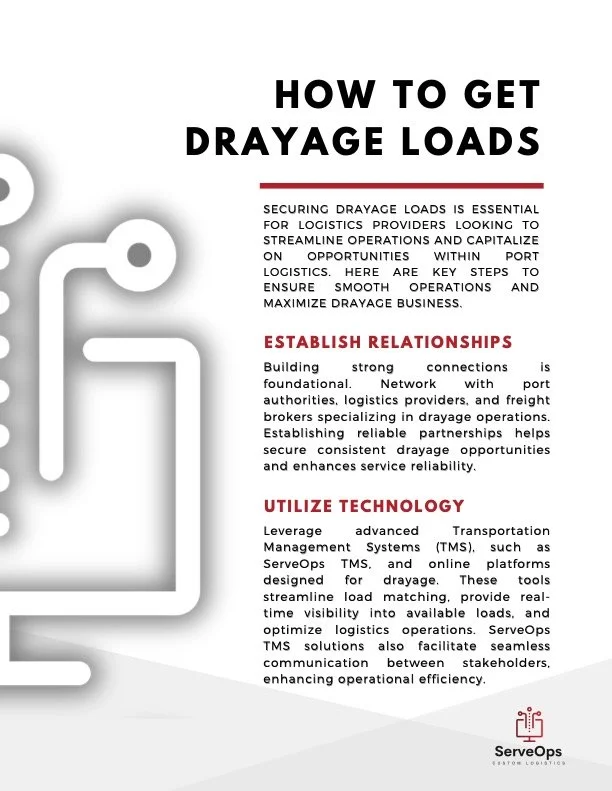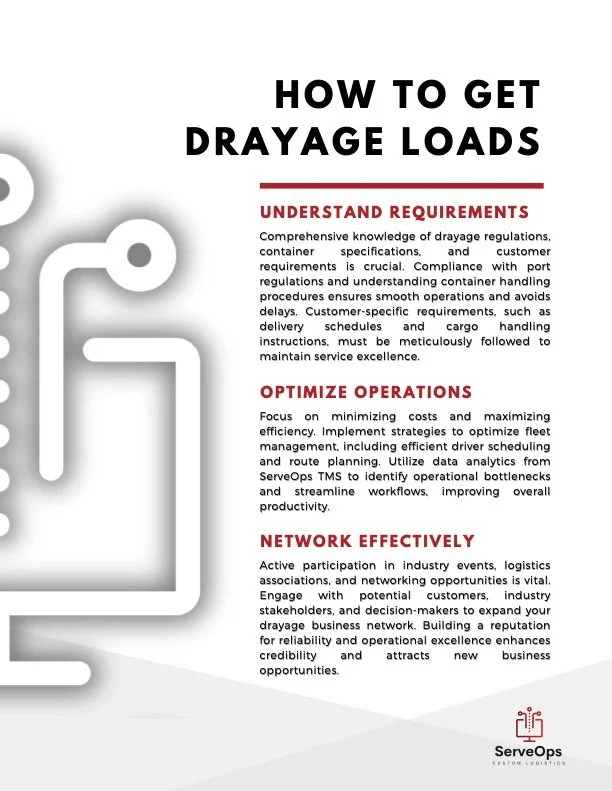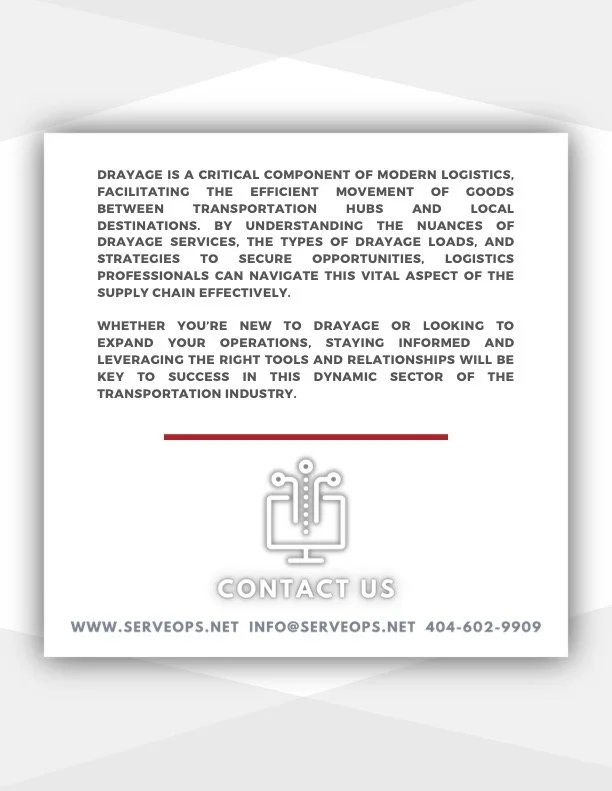Understanding Drayage in Logistics: Services, Loads, and Opportunities
In the dynamic world of logistics, drayage plays a pivotal role in seamlessly connecting ports, warehouses, and distribution centers. But what exactly is drayage, and how does it impact the transportation industry? Let’s dive into the essentials of drayage services, the meaning of drayage in trucking, types of drayage loads, and strategies to acquire drayage opportunities effectively.
What is Drayage in Logistics?
Drayage refers to the short-distance transportation of goods, typically overland, from a port or rail yard to a nearby destination such as a warehouse or distribution center. It serves as a crucial link in the supply chain, facilitating the movement of freight containers or goods between different transportation modes.
What Are Drayage Services?
Drayage services encompass a range of activities aimed at transporting freight over short distances. These services include picking up cargo from ports or rail terminals, transporting it over short distances using trucks or other vehicles, and delivering it to local destinations. Drayage services ensure that goods are efficiently moved between various points within the supply chain.
What Does Drayage Mean in Trucking?
In the context of trucking, drayage specifically refers to the transportation of containers or cargo using trucks over short distances. This process is essential for moving goods from ports to nearby facilities or vice versa, integrating maritime or rail transport with local trucking operations.
What Are Drayage Loads?
Drayage loads typically consist of containers or freight that require transportation over short distances. These loads are handled by drayage carriers who specialize in transporting goods between ports, rail yards, and local distribution points. Drayage loads often involve time-sensitive deliveries and require efficient coordination between logistics partners.
How to Get Drayage Loads
Securing drayage loads involves several key steps to ensure smooth operations and maximize opportunities:
Establish Relationships
Building strong connections is foundational. Network with port authorities, logistics providers, and freight brokers specializing in drayage operations. Establishing reliable partnerships helps secure consistent drayage opportunities and enhances service reliability.
Utilize Technology
Leverage advanced Transportation Management Systems (TMS), such as ServeOps TMS, and online platforms designed for drayage. These tools streamline load matching, provide real-time visibility into available loads, and optimize logistics operations. ServeOps TMS solutions also facilitate seamless communication between stakeholders, enhancing operational efficiency.
Understand Requirements
Comprehensive knowledge of drayage regulations, container specifications, and customer requirements is crucial. Compliance with port regulations and understanding container handling procedures ensures smooth operations and avoids delays. Customer-specific requirements, such as delivery schedules and cargo handling instructions, must be meticulously followed to maintain service excellence.
Optimize Operations
Focus on operational excellence to minimize costs and maximize efficiency. Implement strategies to optimize fleet management, including efficient driver scheduling and route planning. Utilize data analytics from TMS platforms to identify operational bottlenecks and streamline workflows, improving overall productivity.
Network Effectively
Active participation in industry events, logistics associations, and networking opportunities is vital. Engage with potential customers, industry stakeholders, and decision-makers to expand your drayage business network. Building a reputation for reliability and operational excellence enhances credibility and attracts new business opportunities.
Drayage is a critical component of modern logistics, facilitating the efficient movement of goods between transportation hubs and local destinations. By understanding the nuances of drayage services, the types of drayage loads, and strategies to secure opportunities, logistics professionals can navigate this vital aspect of the supply chain effectively. Whether you’re new to drayage or looking to expand your operations, staying informed and leveraging the right tools and relationships will be key to success in this dynamic sector of the transportation industry.


